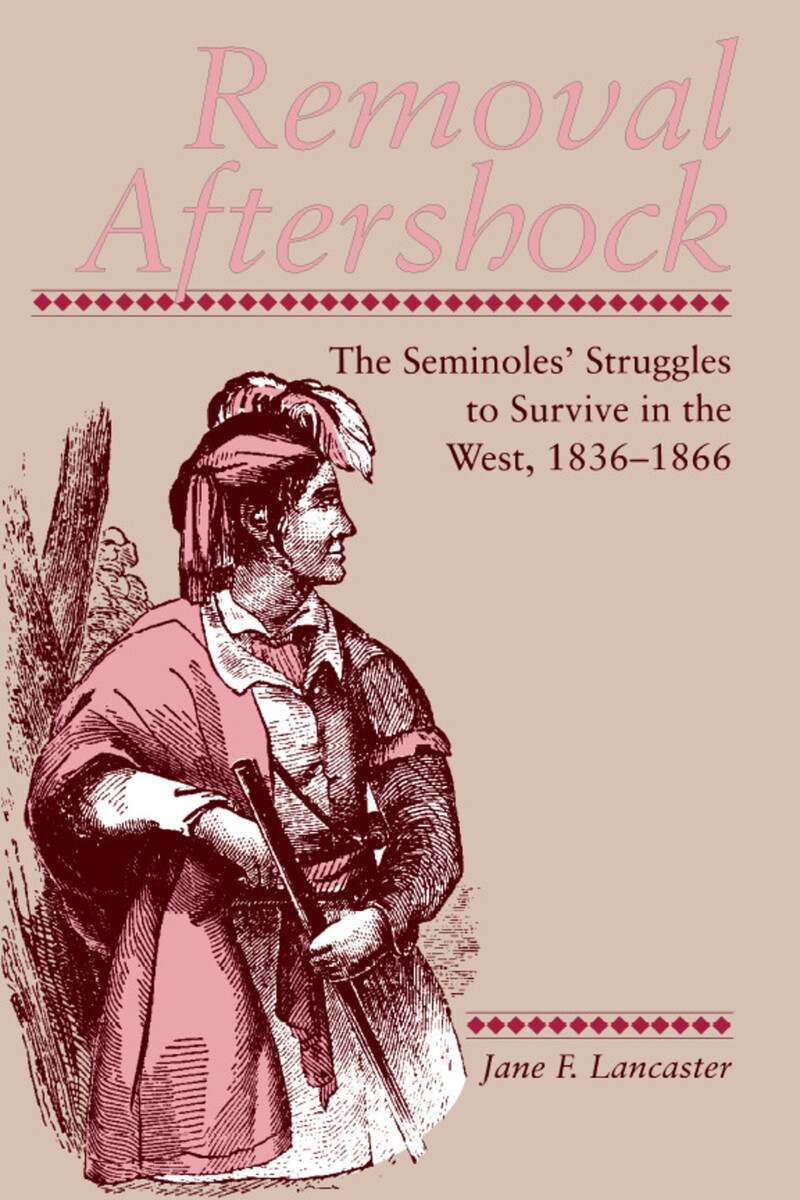Removal Aftershock: Seminoles Struggles Survive West
University of Tennessee Press, 1994
Paper: 978-0-87049-846-6 | Cloth: 978-0-87049-845-9
See other books on: History | Indigenous | Native American Studies | Social Science
See other titles from University of Tennessee Press
Paper: 978-0-87049-846-6 | Cloth: 978-0-87049-845-9
ABOUT THIS BOOK | AUTHOR BIOGRAPHY | REQUEST ACCESSIBLE FILE
ABOUT THIS BOOK
A chronicle of hardship and persistence, Removal Aftershock centers on the Seminoles and their experiences in the West after the federal government forced them out of their Florida homelands during the early 1800s. Gaining control of Florida in 1819, the United States initiated a series of treaties that compelled the Native-American tribes to accept reduced territory, relocations, and finally removal to west of the Mississippi. Some Seminoles fought to stay in Florida; others, along with their black slaves, were sent west between 1834 and 1859. After enduring the trials of removal, the Western Seminoles faced a new struggle. As a small tribe, they had to fight to maintain their identity and land rather than be absorbed into the much larger Creek Nation, as the treaties seemingly required.
The struggle for independence from the Creeks was aggravated by other problems, including on the one hand, government neglect, delayed annuities, and corrupt officials; on the other, they were confronted by threatening Plains Indians, measles and smallpox epidemics, alcohol abuse, droughts, and crop failures. Following an 1856 treaty that brought them independence from the Creeks, the Seminoles were next drawn into the Civil War, which riddled the tribe with division and dispersal, property destruction, and death. In 1866, the Seminoles' cooperation with the Confederates was used to justify reduction of their land from more than 2 million acres to 200,000 acres. In telling the story of the Seminoles after removal, Jane Lancaster highlights a neglected area of Native-American studies and places the tribe in proper historical perspective. Despite their countless hardships and the inhumane policies of the government, the Seminoles have survived to the present day an enduring testament to the stubbornness and determination of the early tribal leaders.
The struggle for independence from the Creeks was aggravated by other problems, including on the one hand, government neglect, delayed annuities, and corrupt officials; on the other, they were confronted by threatening Plains Indians, measles and smallpox epidemics, alcohol abuse, droughts, and crop failures. Following an 1856 treaty that brought them independence from the Creeks, the Seminoles were next drawn into the Civil War, which riddled the tribe with division and dispersal, property destruction, and death. In 1866, the Seminoles' cooperation with the Confederates was used to justify reduction of their land from more than 2 million acres to 200,000 acres. In telling the story of the Seminoles after removal, Jane Lancaster highlights a neglected area of Native-American studies and places the tribe in proper historical perspective. Despite their countless hardships and the inhumane policies of the government, the Seminoles have survived to the present day an enduring testament to the stubbornness and determination of the early tribal leaders.
See other books on: History | Indigenous | Native American Studies | Social Science
See other titles from University of Tennessee Press












